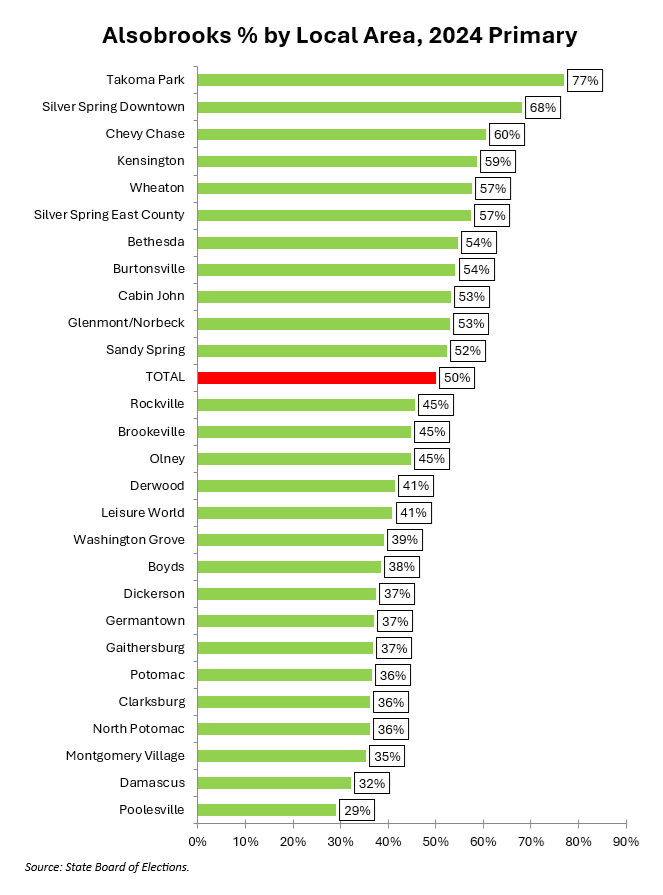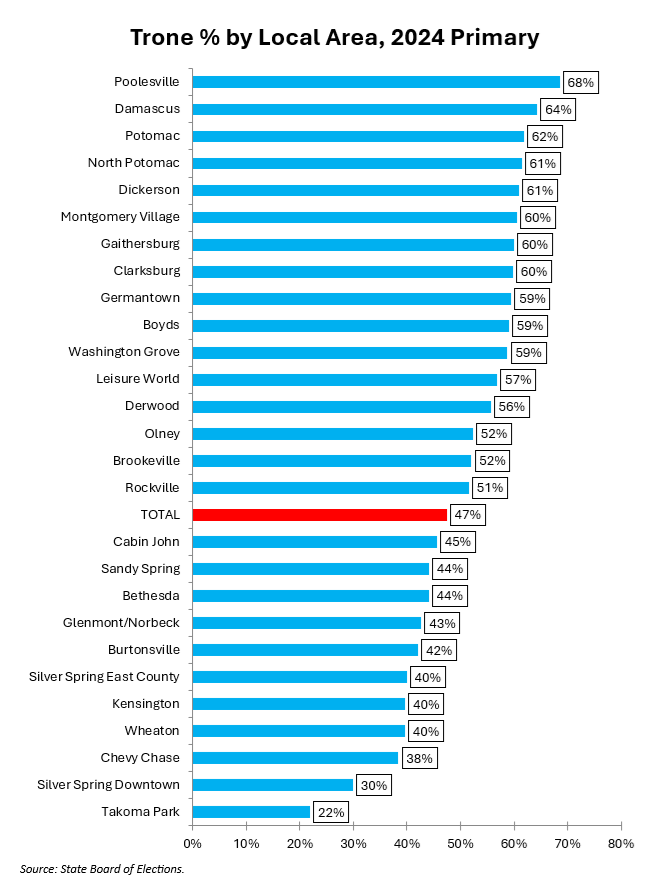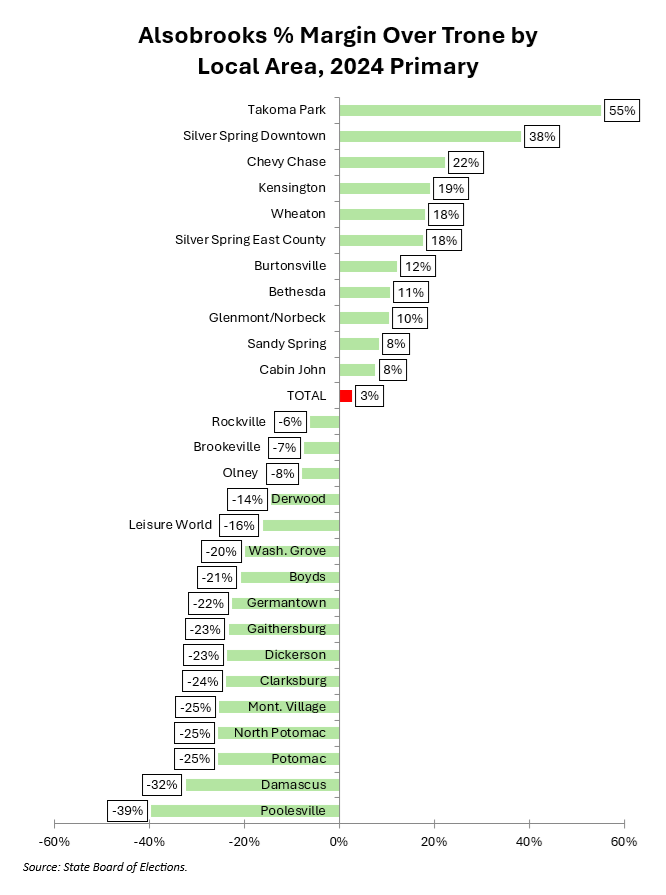By Adam Pagnucco.
Part One looked at the performances of Prince George’s County Executive Angela Alsobrooks and Congressman David Trone by county. Part Two looked at their performances by broad MoCo region (Democratic Crescent, Upcounty and rest of county). Part Three looked at congressional, state and council districts. Now let’s look at local areas, which I define in my election methodology post.
The chart below shows Alsobrooks’s percentage by local area in MoCo.

Alsobrooks’s two best areas were Takoma Park and Silver Spring Downtown. This is the core of MoCo progressive politics and is the strongest geographic base of both Congressman Jamie Raskin and County Executive Marc Elrich. She added the Bethesda-Chevy Chase-Kensington area and heavily Black areas in East County.
The chart below shows Trone’s percentage by local area in MoCo.

Trone’s best areas were in the north and west of the county. Most of these areas are in his Congressional District 6. While Potomac is not in the district, it is his home and he represented it in the previous version of his district in prior years. Trone’s problem is that his best areas often had low turnout as shown in my turnout series.
The chart below shows Alsobrooks’s percentage margin over Trone by local area.

This looks a lot like Raskin’s win pattern over Trone in 2016. Alsobrooks also ran strong in heavily Black Silver Spring East County (the U.S. 29 corridor) and Burtonsville. Downcounty and East County are a potent combination in MoCo politics. (Will Jawando, are you reading this?)
Next, we will look at precinct racial patterns.
